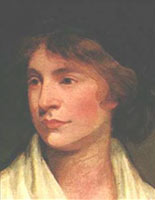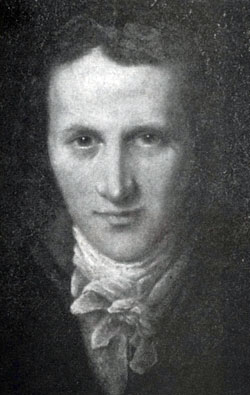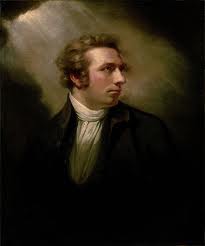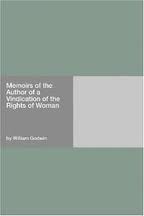Imagine that you had ideas that were so radical for your time that it would take a couple of hundred years for them to be accepted? Can you imagine that your lifestyle would be given more attention in those years than your message? Can you imagine that your most important work was often mispronounced?
Such was the life of the woman we spoke of this week, Mary Wollstonecraft.

Born April 27th, 1759 in London, as the second of seven children to Edward and Elizabeth. Her birth station in life was one of upper middle class. However her father pretty much squandered his inheritance, and the family moved frequently. Each time they did it was a step down to a less affluent home. Dad was a drinker, and pretty abusive…it really wasn’t a warm and happy childhood.
Mary had a couple of close friends as well as some neighbors who cared for her, helped her with her education as well as providing bright spots in a pretty bleak life. Her future prospects didn’t seem very promising.
For an unmarried woman of her time and social class she took up pretty much every career that was available to her.
Lady’s Companion?
Fail.
School Teacher?
Good…for a bit.
Governess?
Not so great.
Of course we go into more detail in the podcast, but she left home at 19 to try and make a living. She supported her sister Eliza, who she helped leave a possibly abusive marriage. She tried to also hang out as long as possible with her friend, Fanny Blood- but conventional lifestyles were not really her thing and they were very much Fanny’s thing.
“I am not born to tread in the beaten track – the peculiar bent of my nature pushes me on.” Mary Wollstonecraft wrote to her other sister, the cooler named Everina.
She got that right.
Finally she ends up in London, working for a man named Joseph Johnson, a book publisher. He encourages her in her writing, and write she did. Children’s books, reviews , and her first novel – entitled Mary- a fiction, which was based on her travels to Portugal to attend the birth- and unexpected death- of Fanny Blood and her first child.
She wrote a book about what she learned as the head of a school, and as a Governess, with the lengthy title, “Education of Daughters: With Reflections on Female Conduct in the More Important Duties of Life.”
Got that?
She also established herself as a political writer with the publication of The Vindication of the Rights of Men, which was a rebuttal of piece written by Edmund Burke.
And on the heels of that document she wrote the biggie: A Vindication of the Rights of Woman: With Strictures on Political and Moral Subjects. Did you catch that? ” WOMAN” Not “womEn” as is often mistaken. Even in this podcast. *coughbySusancough*
What is it about? Well, ENTIRE college level courses are devoted to this work, so we can’t sum it up here. But try this version:
-Women are only inferior due to their inferior education
-All minds are equally receptive to knowledge no matter what package they arrive in
-Women ought not to have power over men, but over THEMSELVES.
(Plus 449 more pages of important information)
While she was starting to grow in both works and audiences as a writer, her personal life was a mess.
She fell in love with artist Henry Fuseli and went so far as to ask his wife if they can all live under one roof. Yeah. That went over well. (No, it really didn’t).
Then she falls in love with American Gilbert Imlay. This relationship produces a daughter, Fanny, as well as a lot of scandal. Imlay claims her as his wife while they are in France ( just watching the French Revolution), although they are not legally married. Mary settles into life as a mother, but Imlay didn’t sign up for such domesticity and is gone for longer and longer times. yadda yadda…two suicide attempts and a business trip to Scandinavia later- he moves in with another woman.
Mary, Mary, Mary…sigh…

Enter William Godwin. The two had traveled in similar social circles in London before life mellowed out Mary. He fell in love with her through her writing and finally they see eye to eye ( as well as other body parts) and begin a fast romantic relationship. He gets her, she gets him, they get pregnant and married.

The end.
Ok, not quite…she gives birth just a mere year after their romance for the ages begins. Ten days after the arrival of baby Mary Godwin, Mary Wollstonecraft dies from complications after childbirth. This left the love of her life to raise her two daughters, Fanny and Mary–who will grow to become Mary Shelley, author of Frankenstein.
And just because you don’t think that this story can’t get any more tragic: In an act of deep mourning and love Godwin publishes her letters in an attempt to show the world what a remarkable and special woman she was. Memoirs of the Author of A Vindication of the Rights of Woman. With this book, all the details of her private life are revealed and her reputation is trashed for a couple hundred years.
Ouch.
Time Travel With The History Chicks
You can read A Vindication of the Rights of Woman. Or you can listen to it – Librivox has it for free on itunes.
We know, you want to read the one that trashed her reputation…naughty listener! 18 bucks on Amazon or download it to your Kindle free!
The letters of Mary Wollstonecraft are available in many different books, as are a good number of her works.
The Collected Letters of Mary Wollstonecraft compiles a great number of her letters.

And you REALLY want to watch this, we know you do.
http://www.youtube.com/watch?v=qjalBmkmkvE
And now that you are really into the life of this woman, check out this blog, or follow Mary on Twitter ( we kid you not!) http://avindicationoftherightsofmary.blogspot.com/p/mary.html
****CORRECTION! Sharp listener Jacki caught a slight faux pas in our Drop Into History segment! George Washington’s wife’s maiden name was Custis, not Curtis. Sorry for the error!*********
As always, music comes courtesy of Music Alley, music.mevio.com




